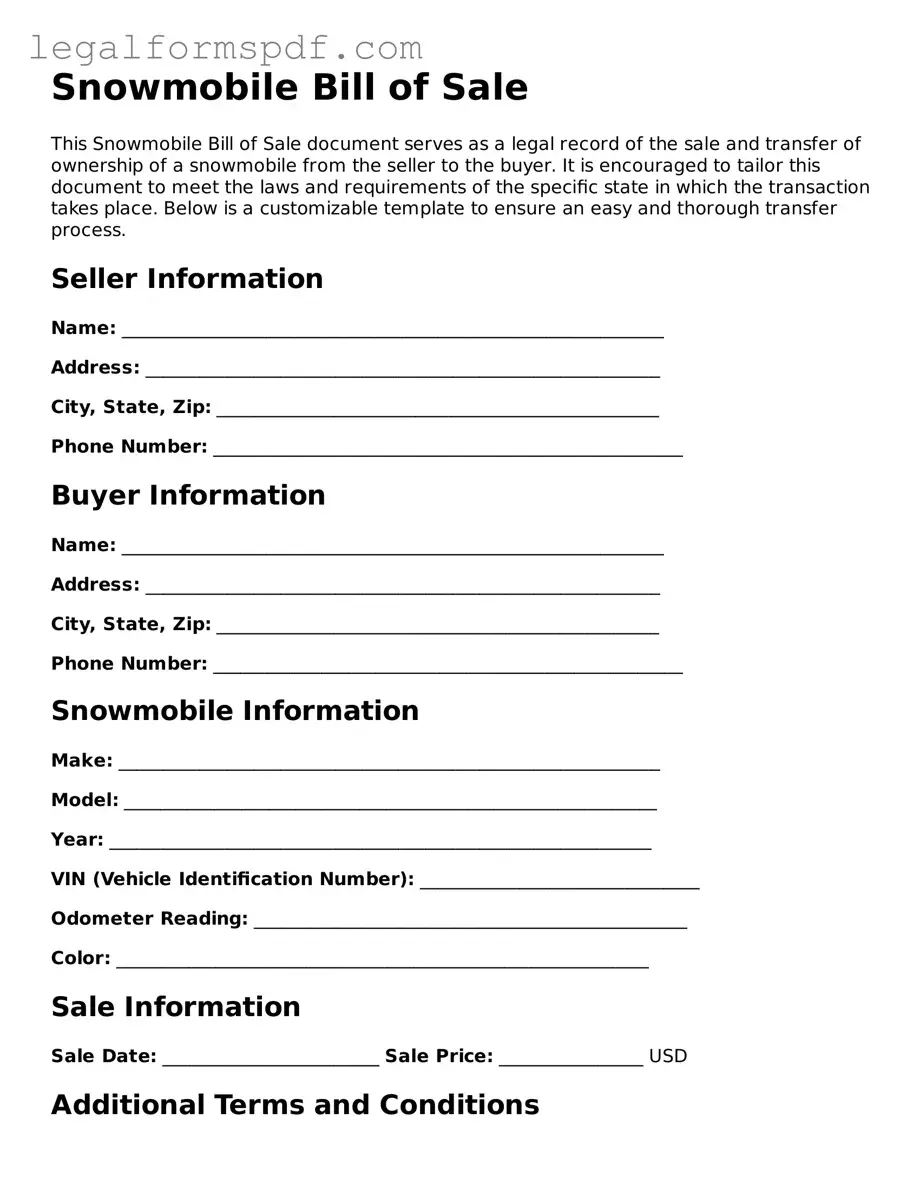Snowmobile Bill of Sale
This Snowmobile Bill of Sale document serves as a legal record of the sale and transfer of ownership of a snowmobile from the seller to the buyer. It is encouraged to tailor this document to meet the laws and requirements of the specific state in which the transaction takes place. Below is a customizable template to ensure an easy and thorough transfer process.
Seller Information
Name: ____________________________________________________________
Address: _________________________________________________________
City, State, Zip: _________________________________________________
Phone Number: ____________________________________________________
Buyer Information
Name: ____________________________________________________________
Address: _________________________________________________________
City, State, Zip: _________________________________________________
Phone Number: ____________________________________________________
Snowmobile Information
Make: ____________________________________________________________
Model: ___________________________________________________________
Year: ____________________________________________________________
VIN (Vehicle Identification Number): _______________________________
Odometer Reading: ________________________________________________
Color: ___________________________________________________________
Sale Information
Sale Date: ________________________ Sale Price: ________________ USD
Additional Terms and Conditions
________________________________________________________________________
________________________________________________________________________
________________________________________________________________________
Signatures
This document does not become a valid Bill of Sale unless signed by both the seller and buyer along with a witness (if applicable as per state requirements). By signing, both parties agree to the terms and conditions laid out above and confirm that the information provided is accurate to the best of their knowledge.
Seller's Signature: __________________________________ Date: ___________
Buyer's Signature: ___________________________________ Date: ___________
Witness Signature (if required): _______________________ Date: ___________
Notary Acknowledgement (if applicable)
In some states, notarization of a Bill of Sale is required or recommended. Please confirm whether this applies to your specific state and include this section if necessary.
State of ___________________
County of __________________
On this day, the undersigned, _________________________, a Notary Public in and for said state, personally appeared ________________, who is personally known to me (or proved on the basis of satisfactory evidence) to be the person(s) whose name(s) is/are subscribed to the within instrument and acknowledged that he/she/they executed the same for the purposes therein contained.
In witness whereof, I hereunto set my hand and official seal.
Notary Signature: _______________________________ Date: _____________
Seal:
